Forsthaus Johanniskreuz
© Landesforsten.RLP.de / B. Steckel
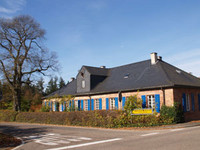
Built in 1826/1827, Forsthaus Johanniskreuz is the oldest house in Johanniskreuz and is steeped in forest history. In 1843, Palatinate and Bavarian foresters met in the Forsthaus of Johanniskreuz to draw up management rules for the forests between Haardt and Westrich. The forest people had recognized that it was a geologically uniform red sandstone mountain range and gave it the name "Palatinate Forest". Until the beginning of the 20th century, this term was only used by forestry. Today the Palatinate Forest has made a name for itself far beyond the borders of forest interest, not least as part of the cross-border biosphere reserve Palatinate Forest-Northern Vosges.
You can find more information about the Palatinate Forest, the biosphere reserve and leisure activities at www.pfaelzerwald.de
Castles in the Elmstein Valley
© Landesforsten.RLP.de / B. Steckel
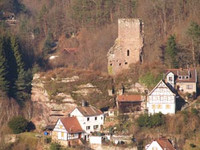
The castles in the Elmstein Valley are mighty buildings from medieval times. The most famous castles include Erfenstein and Spangenberg - according to legend, once connected at a dizzying height across the valley with a leather bridge. The Spangenburg is no longer in the Johanniskreuz Forestry Office, but in the Neustadt district.
The Breitenstein Castle follows at the Breitenstein Valley. Hidden behind tall trees, its ruins still remain. The last castle ruin before Johanniskreuz is Elmstein Castle, above the town of the same name.
Baroque castle of the Barons von Hacke
© Landesforsten.RLP.de / B. Steckel
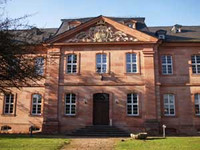
The Baroque palace of the barons von Hacke, built in 1766, rises on the outskirts of Trippstadt. The barons were in charge of forestry and hunting in the Palatinate for three generations. The Gienanth family followed in 1833, whose name is associated with the iron smelting work in the Trippstadt area. With the sale in 1865, the castle came into state ownership and from then on served as the seat of the forestry office and as a forestry training centre. The castle has been home to the Research Institute for Forest Ecology and Forestry in Rhineland-Palatinate since 1987.
Heidelsburg
© Landesforsten.RLP.de / B. Steckel
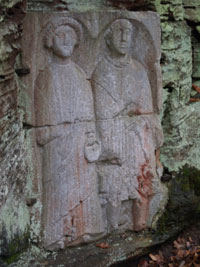
Heidelsburg in the Schwarzbach Valley between Clausensee and Waldfischbach-Burgalben is not a medieval castle but a late Roman settlement.
Excavations unearthed not only an extensive hoard of agricultural equipment, but also the grave slab of a Roman forest guardian. This "Saltuarius" can be seen as the first forester in the Palatinate Forest. The copy of the grave slab is embedded in the rock wall below the Heidelsburg.
Speyerbach
© Landesforsten.RLP.de / B. Steckel
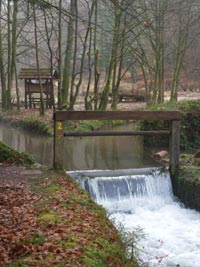
The Elmstein Valley is shaped by the Speyerbach, which is known for its excellent water quality. Until 1906, the Speyerbach, like many of its tributaries, served as a Triftbach over the centuries, in which short pieces of wood were transported to the Rhine and the low-wood parts of Palatinate. Many stone relics from this period such as weirs and ashlar masonry are still preserved today.

